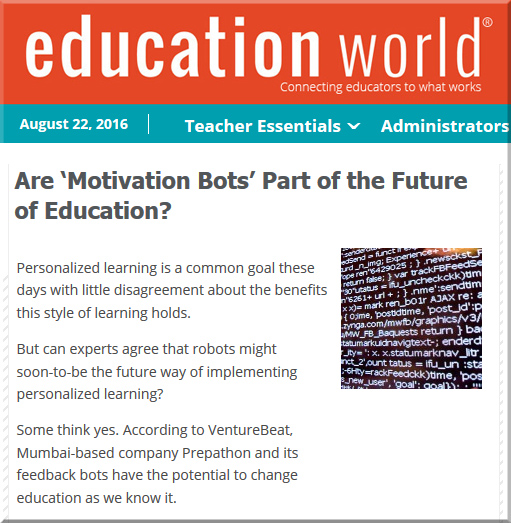Education Technology And Artificial Intelligence: How Education Chatbots [could] Revolutionize Personalized Learning — from parentherald.com by Kristine Walker
From DSC:
I inserted a [could] in the title, as I don’t think we’re there yet. That said, I don’t see chatbots, personal assistants, and the use of AI going away any time soon. This should be on our radars from here on out. Chatbots could easily be assigned some heavy lifting duties within K-20 education as well as in the corporate world; but even then, we’ll still need excellent teachers, professors, and trainers/subject matter experts out there. I don’t see anyone being replaced at this point.
Excerpt:
As the equity gap in American education continues, Microsoft co-founder Bill Gates has been urging educators, investors and tech companies to be more open in investing time and money in artificial intelligence-driven education technology programs. The reason? Gates believed that these AI-based EdTech platforms could personalize and revolutionize school learning experience while eliminating the equity gap.
Also see:
Are ‘Motivation Bots’ Part of the Future of Education? — from educationworld.com
The Motivation, Revision and Announcement bots each perform respective functions that are intended to help students master exams.
The Motivation bot, for instance, “keeps students motivated with reminders, social support, and other means,” while the Revision bot “helps students to best understand ways to improve their work” and the Announcement bot “tells students how much studying they need to do based on the amount of time available.”
Somewhat related:
Deep Learning Is Still A No-Show In Gartner 2016 Hype Cycle For Emerging Technologies — from .forbes.com by Gil Press
Excerpt:
Machine learning is best defined as the transition from feeding the computer with programs containing specific instructions in the forms of step-by-step rules or algorithms to feeding the computer with algorithms that can “learn” from data and can make inferences “on their own.” The computer is “trained” by data which is labeled or classified based on previous outcomes, and its software algorithms “learn” how to predict the classification of new data that is not labeled or classified. For example, after a period of training in which the computer is presented with spam and non-spam email messages, a good machine learning program will successfully identify, (i.e., predict,) which email message is spam and which is not without human intervention. In addition to spam filtering, machine learning has been applied successfully to problems such as hand-writing recognition, machine translation, fraud detection, and product recommendations.











Thanks for the explanation about bots, AI and what they can do or could do in the education sector. A little more business integrations and better customer experience will work out wonders. I have come across a chatbot platform called Engati which guided me to design a chatbot within 10 mins and no coding. You too can give it a try at building a bot in less than 10 mins. Engati is a chatbot platform that allows you to build, manage, integrate, train, analyze and publish your personalized bot in a matter of minutes. It presently supports eight major messaging platforms including messenger, Kik, telegram, line, Viber, Skype, slack and webchat with a focus on customer engagement, conversational commerce, and customer service and fulfillment. Read more about it here http://www.engati.com
Thanks Kumar for this comment and for passing along the information about engati.com — I appreciate it.
Take care,
Daniel